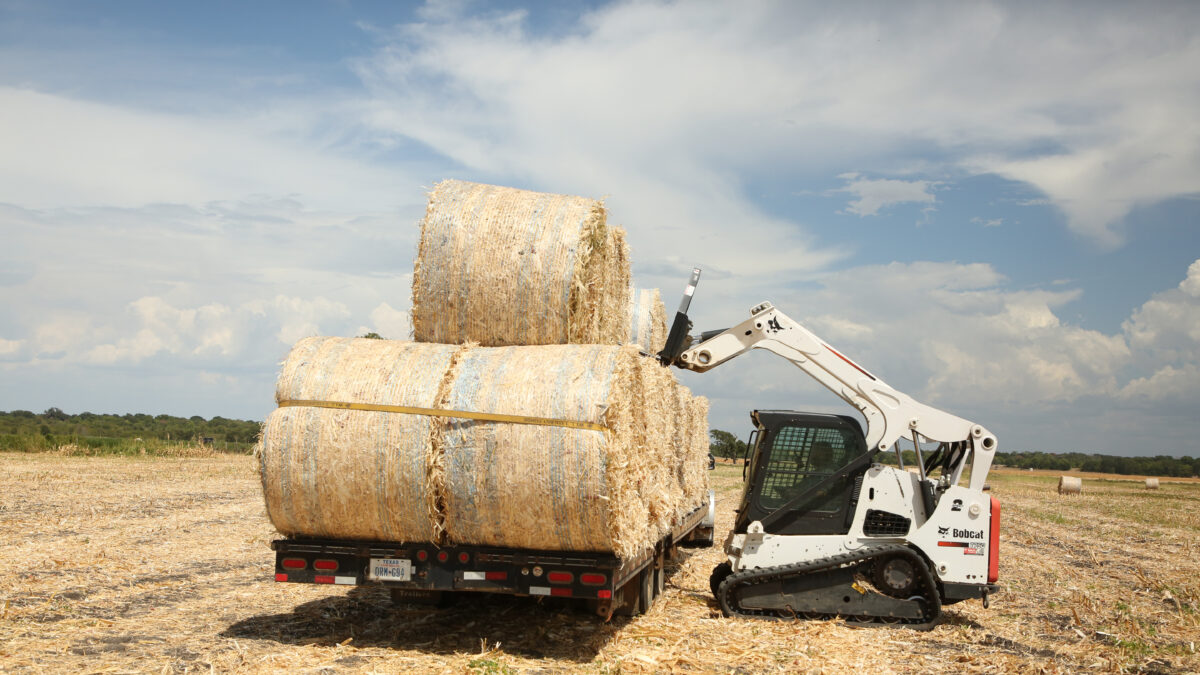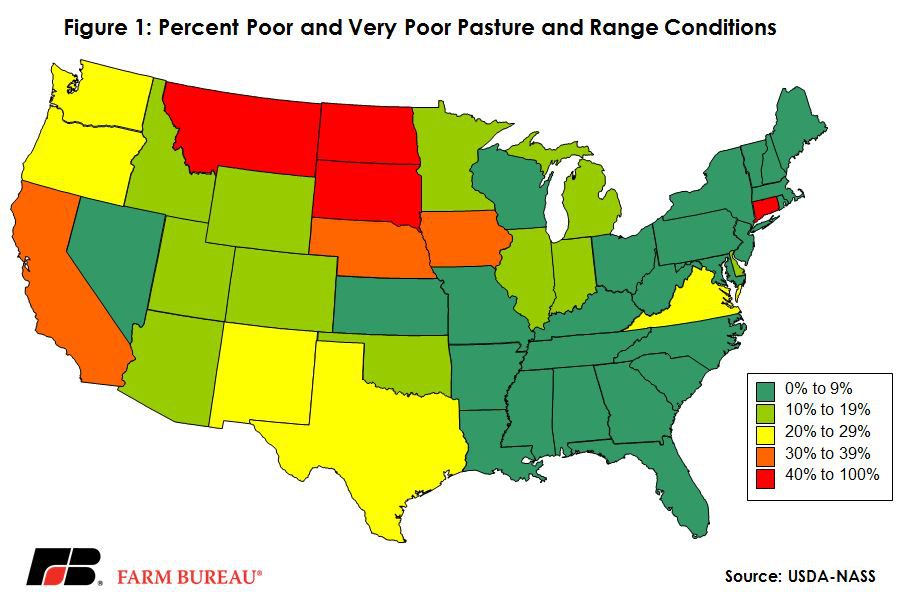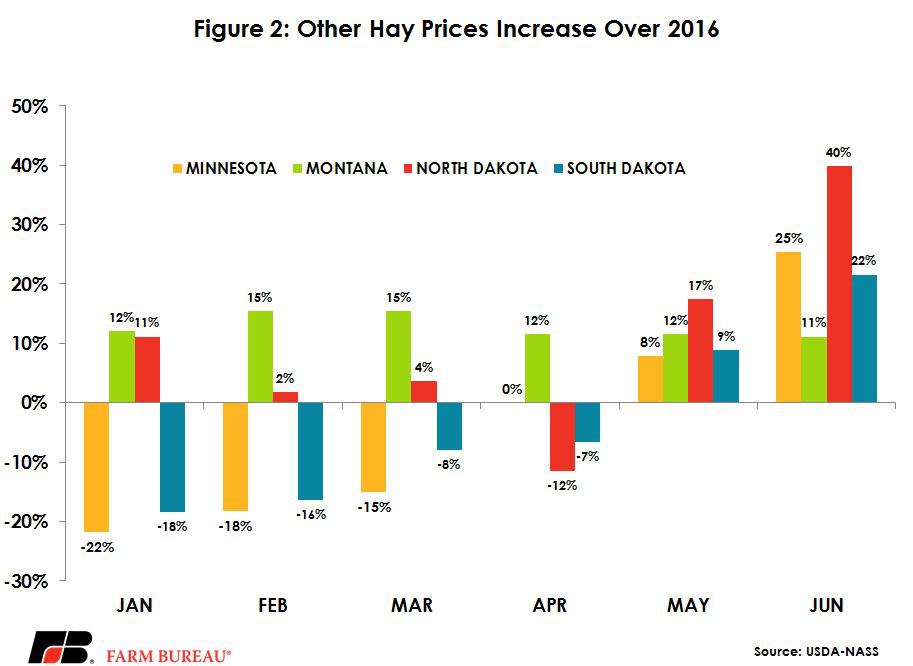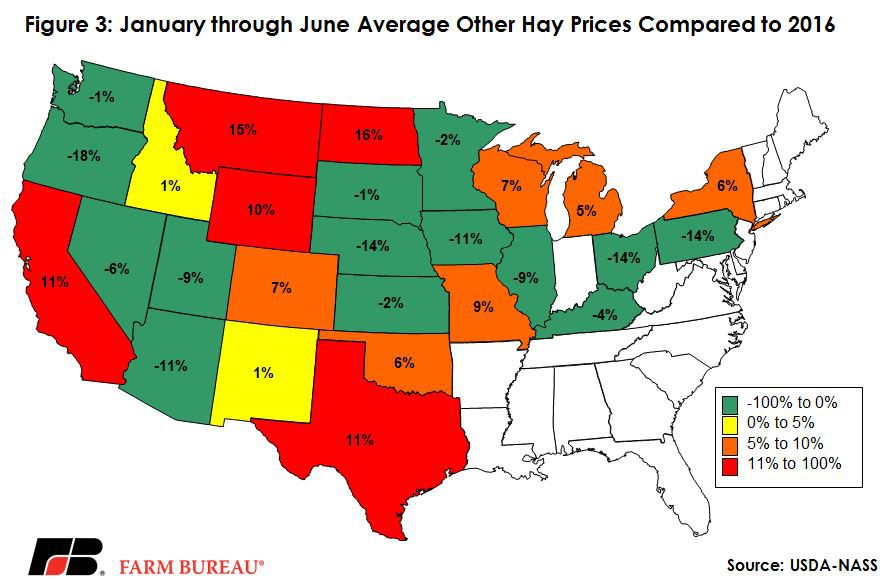Drought Deepens, Ripples Hay Market
AFBF Staff

photo credit: Texas Farm Bureau, Used with Permission
The Northern Plains continues to have very dry conditions and over the last month has progressively worsened to a D4 or exceptional on the drought monitor. Last week, it was estimated that as much as 30 percent of the High Plains region (N.D., S.D., Wyo., Colo., Neb., and Kan.) is experiencing moderate (D1) to exceptional (D4) drought, and nearly 10 percent is in the extreme (D3) to exceptional (D4) drought categories. Montana has also been greatly impacted, and as much as 50 percent of the state is experiencing moderate (D1) to exceptional (D4) drought, and almost 25 percent in extreme (D3) to exceptional (D4) drought categories.
Not only are these drought conditions impacting corn, soybean, and spring wheat conditions, this intensity is also reflected in the pasture and range conditions released weekly by USDA NASS. Over 50 percent of the pasture and range is in critical conditions, rating poor and very poor, in Montana, North Dakota and South Dakota. Figure 1 maps the degree of pasture and range conditions that were listed as poor and very poor in the Crop Progress report on July 31, 2017. Inadequate pastures have led to cattle moving south much earlier and at lighter weights than are typically seen. Cattle on Feed for June showed large increases in the year over year figures in categories under 800 pounds. Cattle placed under 600 pounds were up 30 percent compared to 2016. In addition, USDA had announced multiple initiatives allowing for emergency grazing on Conservation Reserve Program lands and there have been reports of roadside baling.

One of the signposts of inadequate pasture conditions is supplemental feeding, and although some cattle have moved, other livestock may still require additional feed supplies. Other hay prices have risen dramatically in the Dakotas and surrounding states. Average other hay prices from January through June are 15 percent and 16 percent higher than last year in Montana and North Dakota, respectively. South Dakota, although year-to-date is below year ago levels, has seen other hay prices increase 22 percent in the month of June. Minnesota other hay prices are up 25 percent in June. Figure 2 shows the percent increase over 2016 on a monthly basis and Figure 3 shows the year to date average other hay prices over the same time period last year.


Hay prices will likely increase in surrounding states as the drought continues and deepens. Similar to droughts seen in the Midwest and the Southern Plains, this drought will likely have a lasting effect. Because of the short growing season in the Northern Plains and lower cuttings per acre, the implications are likely to affect stocks going into the next winter and over a much larger footprint than the drought area as supplies are drawn from other areas of the country. The High Plains corridor is typically the highest producing other hay states in the country. North Dakota, South Dakota, and Montana all fall within the top 10 all hay producing states in a typical year.
